Safaris are a very special kind of trip and, for many, a once-in-a-lifetime experience. I fell in love with Africa many years ago and have since traveled through 18 African countries, spending more than 50 nights on safari in the African savanna. One of the biggest highlights for me has always been walking safaris. You experience the wilderness and wildlife in a completely different way compared to being in a safari vehicle: your senses are heightened—you see, smell, and hear more intensely. At the same time, you’re active, learning, and discovering things you would never notice from a car.
In this post, I’ll take you along on my journey through a walking safari in Hwange National Park in Zimbabwe and share some tips for anyone planning such an adventure.
1. Getting there via Lusaka, Livingstone, and Victoria Falls
Our trip began with Ethiopian Airlines via Addis Ababa to Lusaka (Zambia). We had deliberately chosen a budget-friendly option—it allows you to connect better with local people and experience the country more authentically.
After a day to acclimatize and stock up on supplies, we headed to the local Inter-City Bus Terminal, a bustling place with countless operators. While ticket prices were almost identical, departure times varied greatly. At first, we were sold tickets for a much later bus, but with persistence we managed to get last-minute seats on one that was leaving immediately.

The seven-hour journey from Lusaka to Livingstone offered fascinating glimpses of rural life along the way. Once there, we continued to the Victoria Falls Bridge—a quick stop, and of course, the obligatory bungee jump.
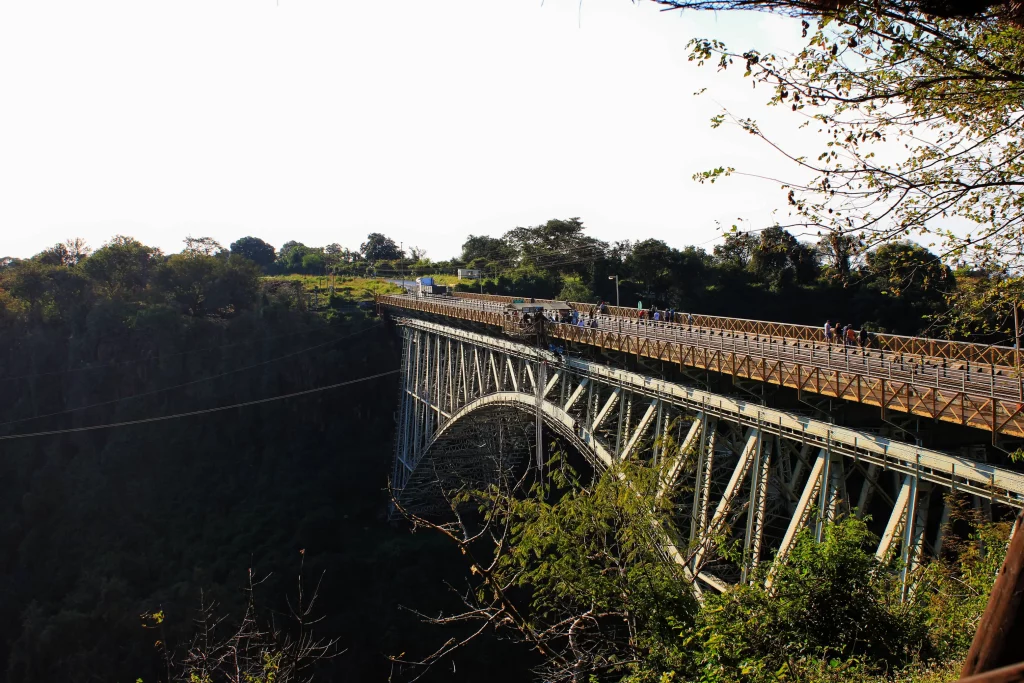
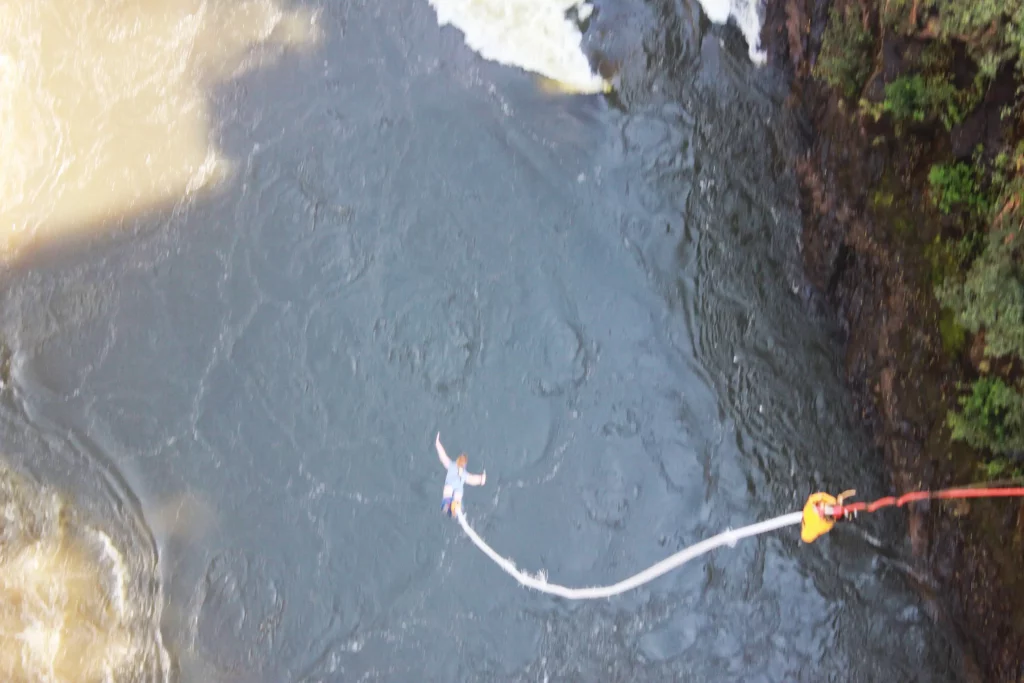
From there, we crossed the border on foot and reached our accommodation in Victoria Falls Town about 40 minutes later. The border crossing was calm and orderly—a welcome contrast to other border experiences I’ve had in Central Africa.
We stayed two nights in Vic Falls, explored the waterfalls, and then set off for our walking safari in Hwange National Park.
2. Packing List and Preparation
For a walking safari in the African bush, the right gear is essential – lightweight, practical, and complete. Here’s my recommended packing list:
Clothing & Footwear
- Neutral colors (khaki, brown, olive, grey); avoid bright colors or camouflage
- Seasonal, weather-appropriate clothes: lightweight, long-sleeved cotton shirts and long pants (great against sun, insects, and thorns)
- Sturdy, comfortable walking shoes suitable for warm weather and thorny terrain
- Highly recommended: light safari gaiters to protect against burrs and sticky seeds
- Layering is key: mornings and evenings can be cold—bring a fleece, windbreaker, and possibly a hat depending on the season
Sun & Dust Protection
- Wide-brimmed hat, sunglasses, plenty of sunscreen
- Buff or scarf to protect against dust
Daypack & other Essentials
- Carry only what you need during the day: water, snacks, camera, binoculars, insect repellent
- Headlamp (very useful for finding the bush toilet at night)
- Water bottle or hydration system
- Insect repellent
- Camera and binoculars
- First-aid kit and personal medication
- Malaria prophylaxis if advised (I personally don’t take it, for good reasons)
- Travel journal to record your experiences
3. Organizing the Walking Safari & The Team
We had found a local operator online. Our guide, Tom, had once been a farmer before Zimbabwe’s land confiscations, and he carried a wealth of experience. He was accompanied by his son – training as a trail guide – and a tracker. In addition, a support team met us at prearranged spots, setting up mobile tents and dropping off supplies. This meant we could travel light, carrying only our daily essentials.
Before setting out in Hwange, we received a thorough safety briefing—far more detailed than for game drives. Tom summed it up in one sentence:
“Only food runs away.”
He told us he had been forced to shoot three lions in his career, each time because tourists panicked and tried to run. He made us promise never to do that again—adding that if it happened next time, he’d let fate take its course. The message was clear: we definitely didn’t want to be the ones to test his resolve.
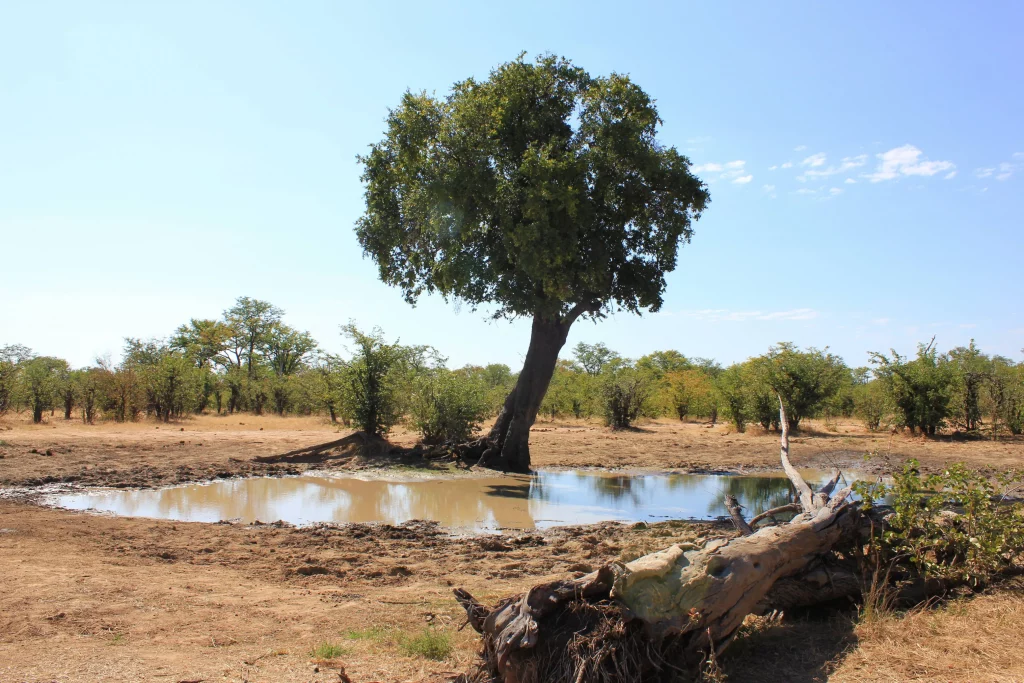
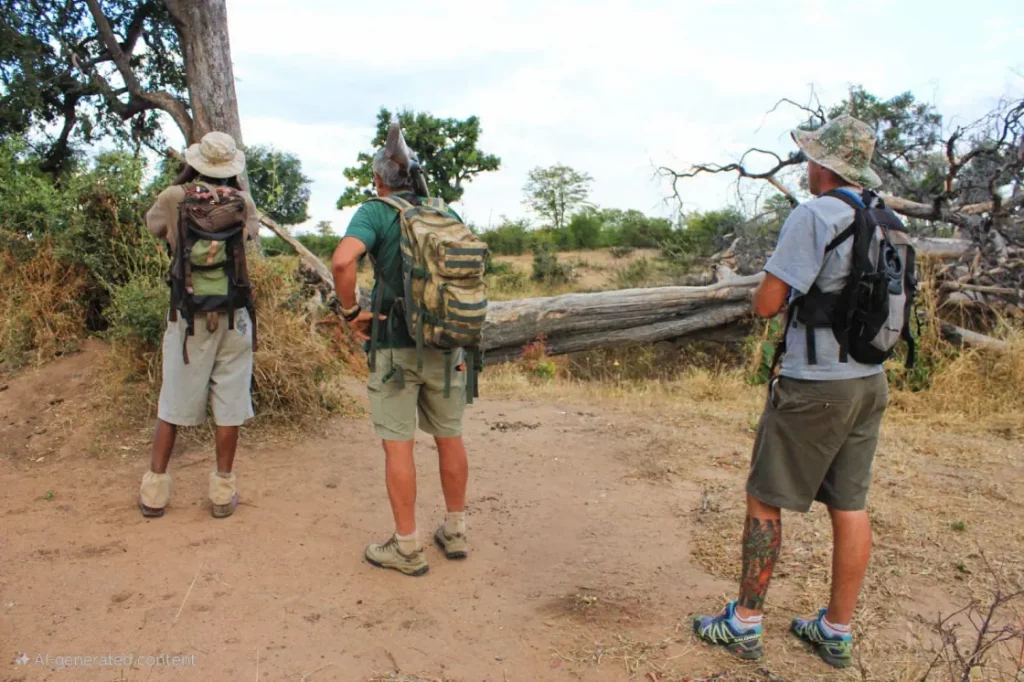
4. Days in the Bush – Hwange National Park
Each morning started early. We walked in single file: Tom with his rifle up front, us behind him – focused and silent. Communication was limited to subtle signals like whistles, taps, or snaps—sounds that wouldn’t startle animals.
This allowed us to study tracks, observe insects, and discover small wonders: shimmering birds, fascinating bugs, and plants that could be used as soap or toilet paper. We even learned how to estimate an elephant’s age from its dung. Impala herds often watched us cautiously from a distance.
From farther away, we also spotted larger animals: giraffes, zebras, wildebeests, and hippos.
By early afternoon, the heat slowed us down, but we always reached camp before sunset. During sundowners, we tended to small scratches and thorn pricks. Despite the night sounds of hyenas and the chill, we slept surprisingly well.

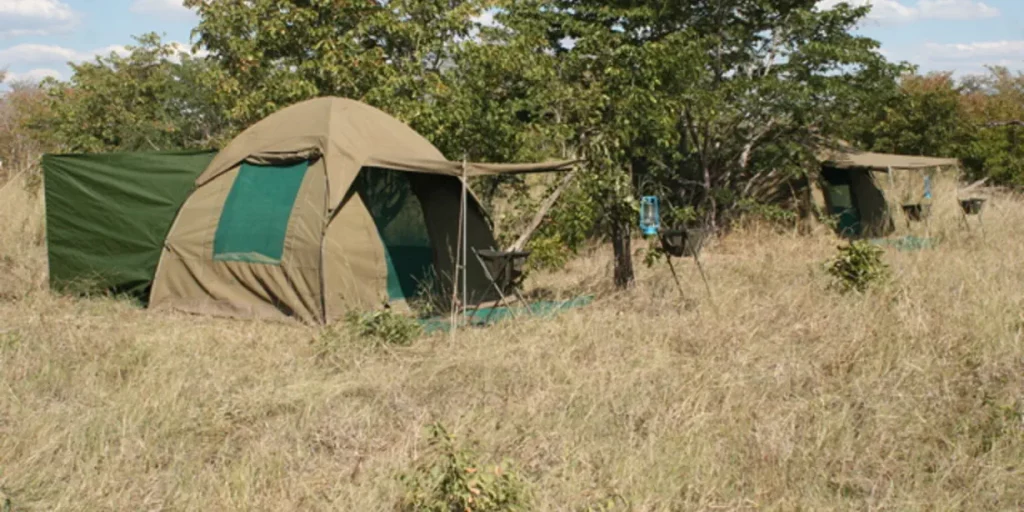
5. Walking Safari Highlights in Zimbabwe
African Wildcat – A lightning-fast encounter with one of the rarest sightings in the African bush. Even many veteran safari guides never get to see one.
Elephant Mock Charge – Once, we suddenly came face-to-face with an elephant about 20 meters away. He seemed just as startled as we were. His ears flared wide—then came the mock charge!
Fortunately, we were prepared. We crouched calmly, stayed still, and the elephant charged briefly before stopping, trumpeting indignantly, and turning away. We then slowly backed out of the situation.
The moment reminded me of an encounter with a mountain gorilla in Uganda who also mock-charged me. It’s something you never really get used to.
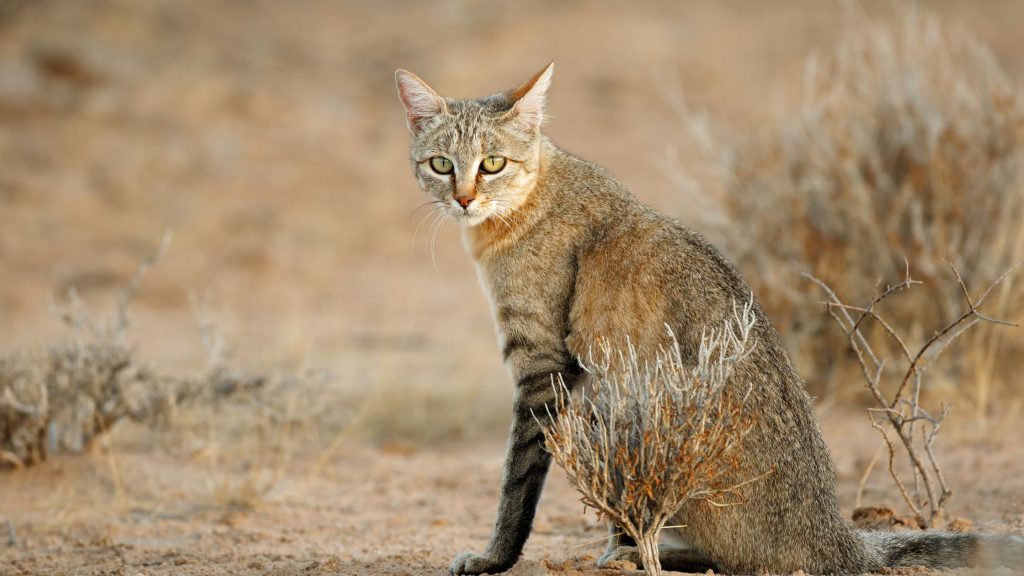

6. Summary & Recommendations
Hwange remains unforgettable for me, and I hope this story inspires others to try a walking safari. A few final thoughts:
Take safety seriously: Follow your guide’s instructions. If it’s your first safari, read up on how to behave around wildlife beforehand.
Protect nature: Check what your safari operator is doing for sustainability. Always follow the principle: leave nothing behind, take nothing with you.
Walking safaris offer a different kind of experience: more sensory, quieter, and deeper than vehicle safaris.
Preparation is everything: The right gear and clear communication with your operator help avoid unpleasant surprises.
The team matters: An experienced guide, tracker, and support crew make all the difference between mere adventure and a safe, meaningful experience.

